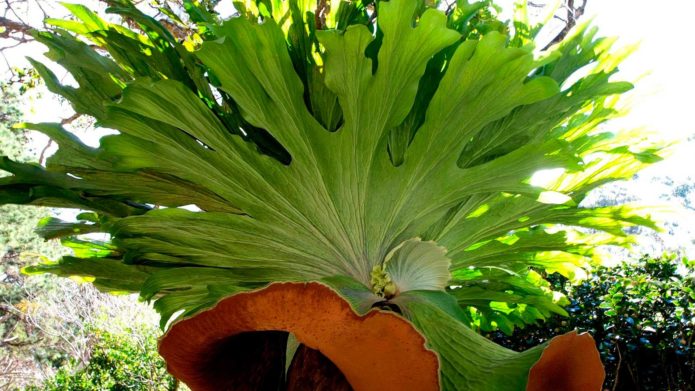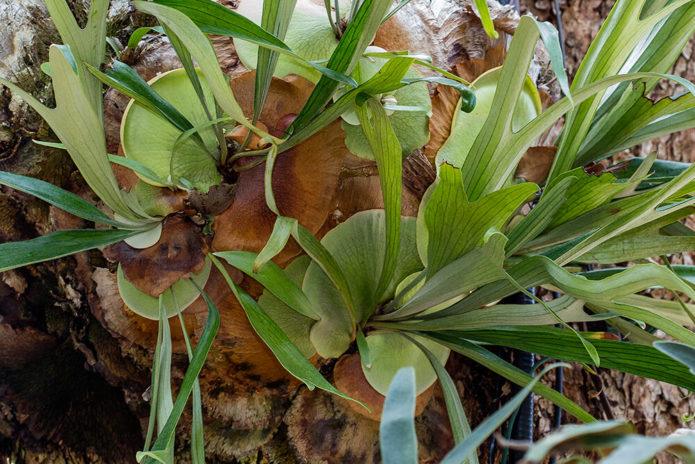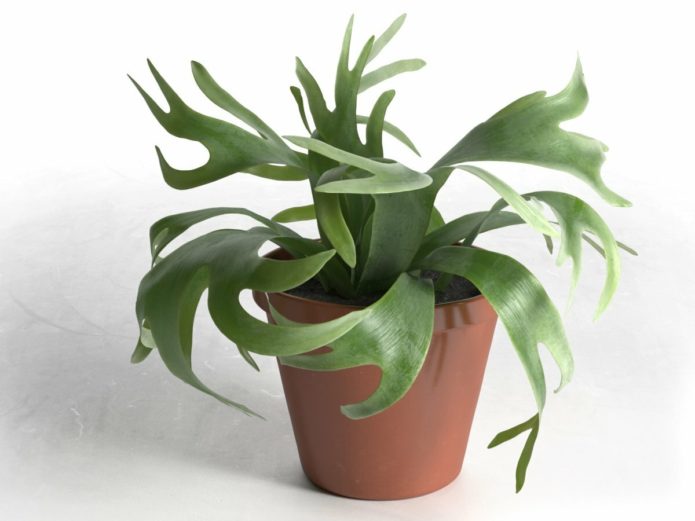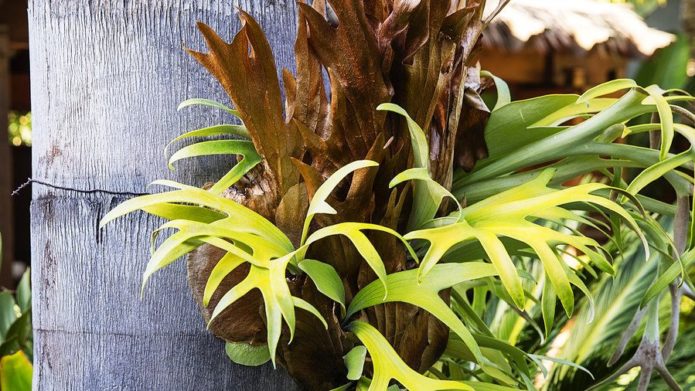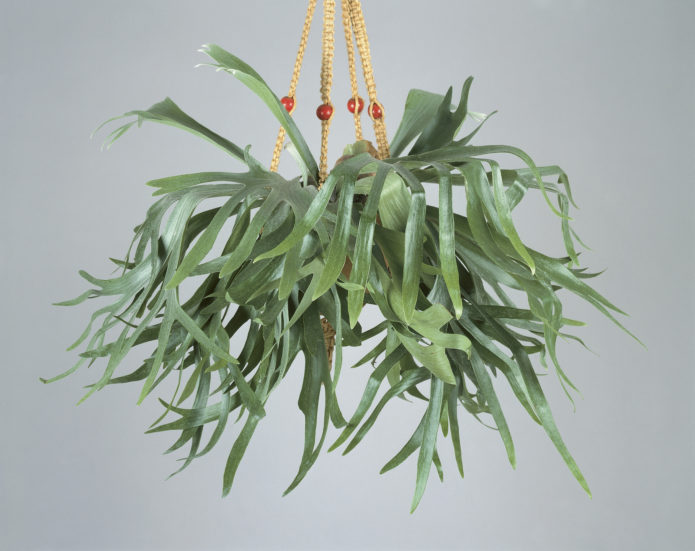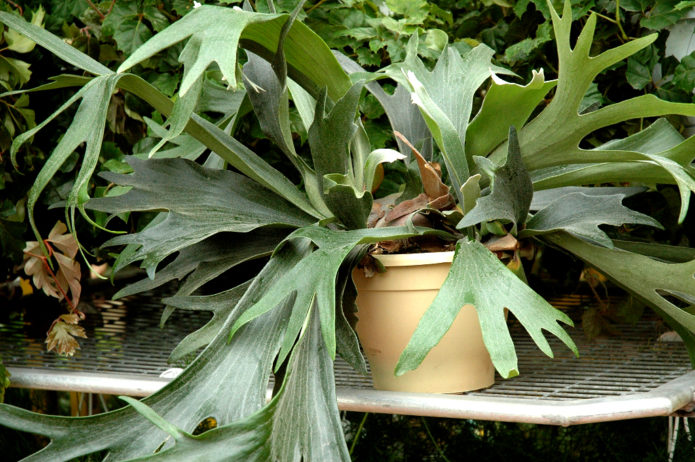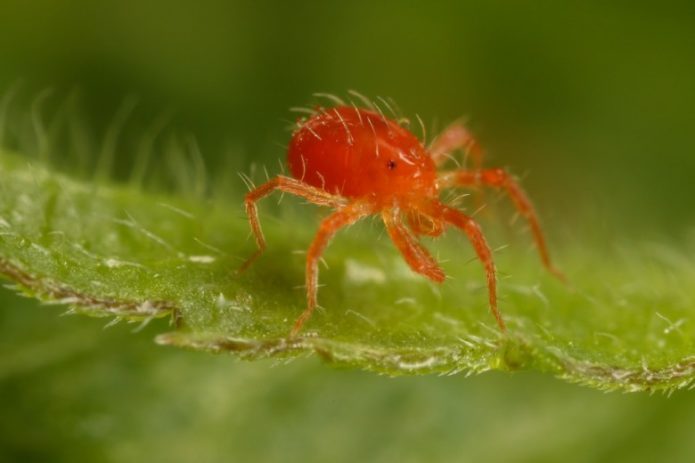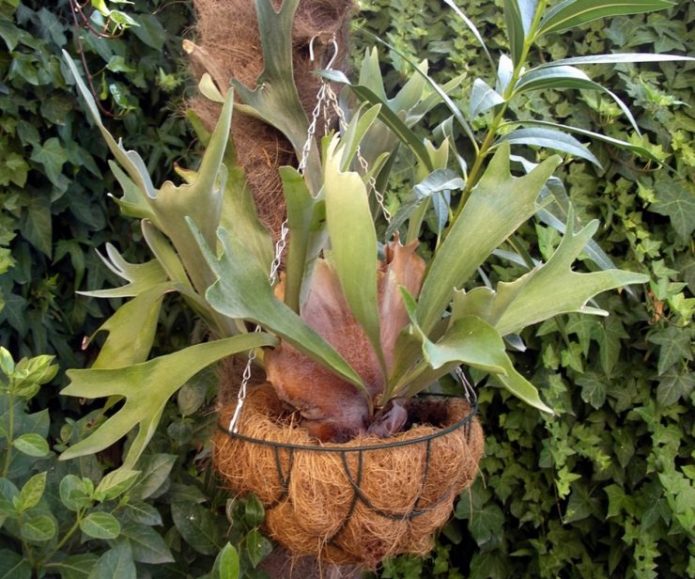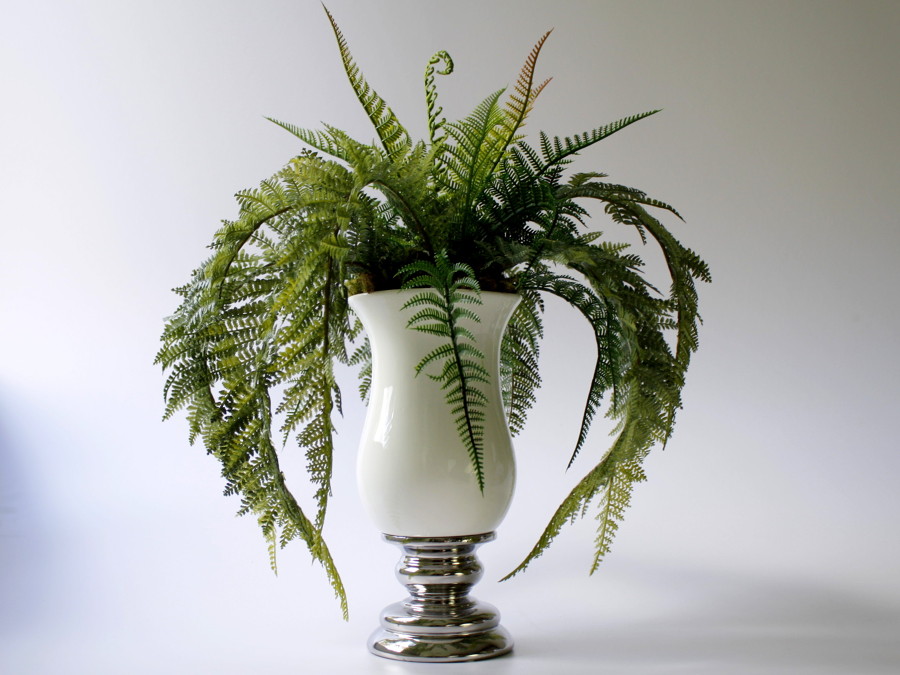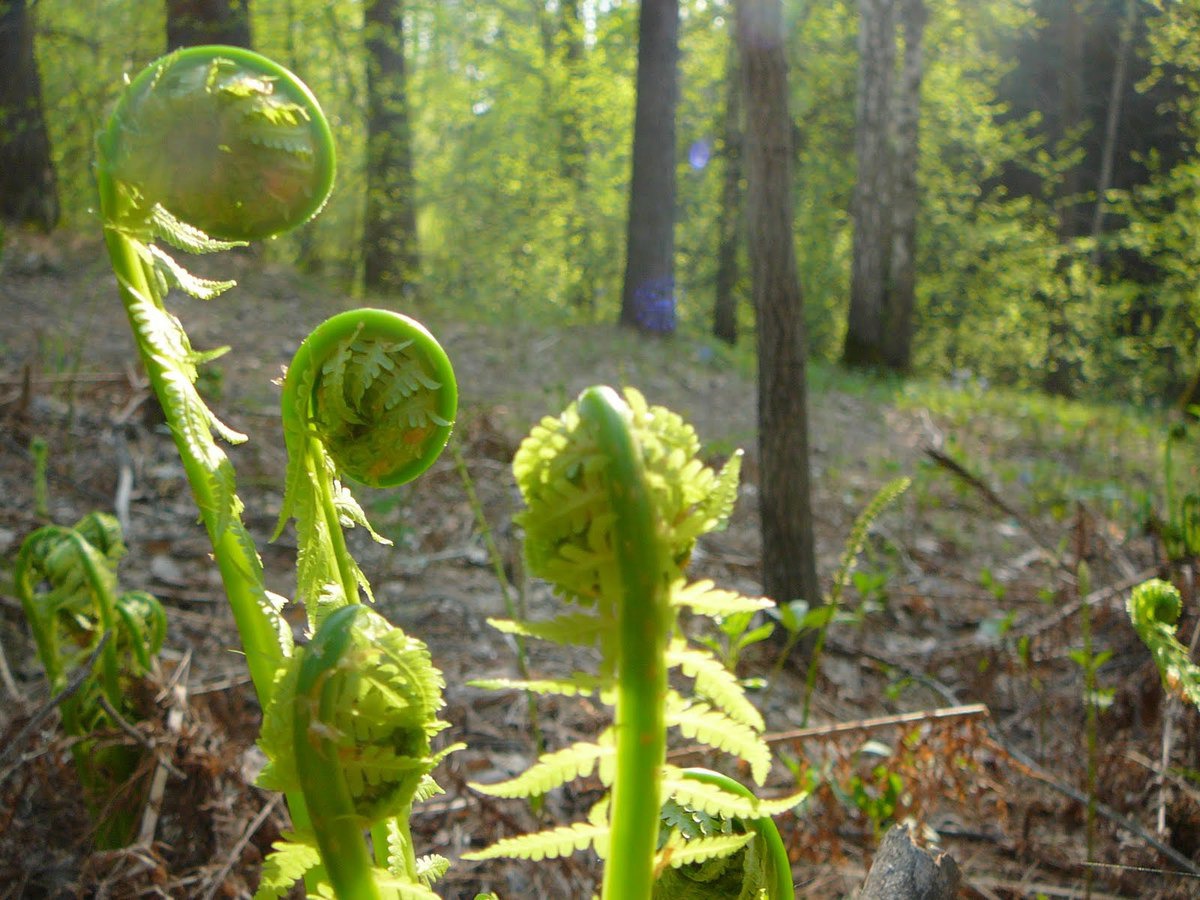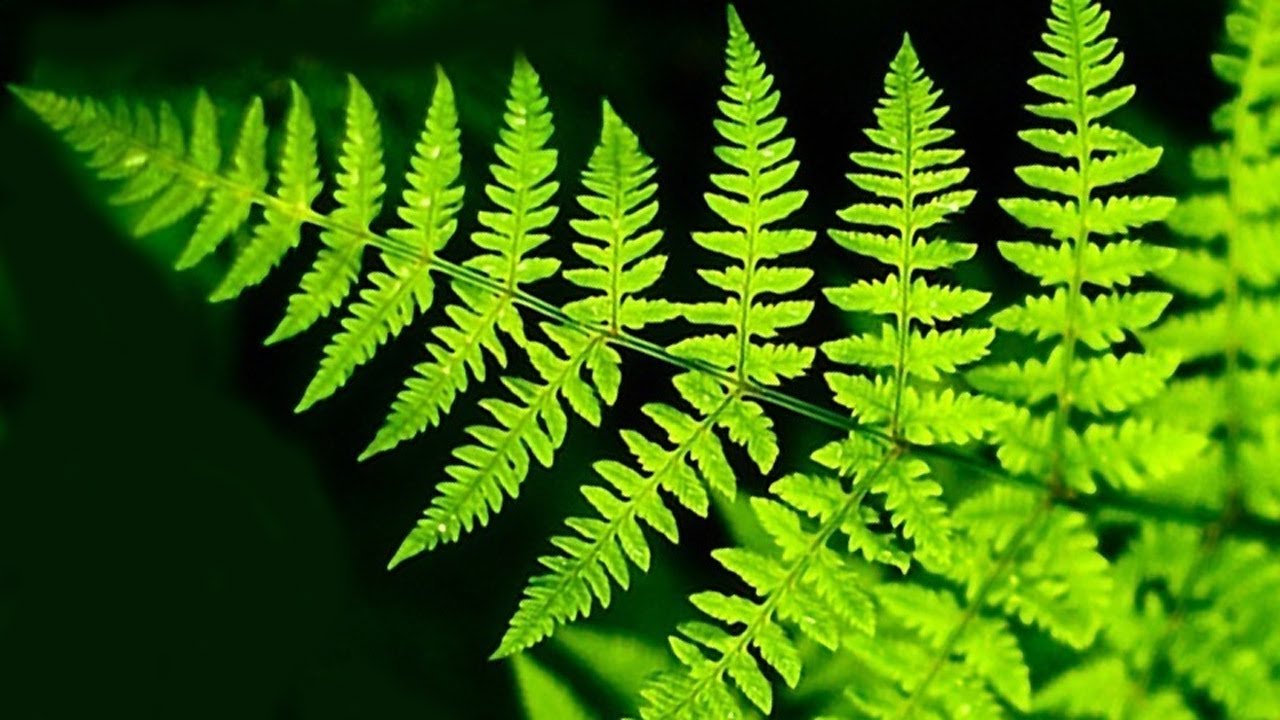Among lovers of indoor ornamental plant growing, a special group is made up of fans of growing mosses and ferns. These people can spend hours talking about their green pets, highlighting individual varieties and features of growth. Caring for indoor ferns is simple, but unique. And they themselves look attractive in their own way and sometimes even original. One of these not quite common varieties of fern is Platycerium.
Content
What is the Difference Between Platizerium and Platornog
This is one and the same kind of fern, only Platycerium is its biological name, and ordinary people christened it flathorn or deer horn. And not in vain: in appearance it is very similar to horns, for some reason painted green. This comparison is most suitable for the most common species among florists - the two-forked Platycerium.
The homeland of this plant is the tropical forests of Australia, India and Africa, and everywhere its folk names are somehow associated with horns.
Description
This plant, from a biological point of view, is considered an epiphyte - it does not live on the ground, but on trees, settling in the forks between the branches. Its peculiar leaves are not actually considered as such, but are called vayas, like all ferns.
Vayi in a plant of two types:
- In the upper ones there are spores with which the plant reproduces.
- The lower ones are hollow, with them the plant twines around the tree, and pieces of bark, dead small insects and the ground brought by the wind accumulate in them. All this becomes a nutritious substrate on which the flathorn grows successfully in nature.
Indoor species and varieties
In nature, there are more than a hundred species of Platyceria, but only 4 of them are cultivated at home. But each has its own distinctive qualities.
Platycerium Grande
This is truly a giant among ferns - its length reaches 2 m. Moreover, they are also quite wide - up to 60 cm. The leaves look slightly dissected.
In nature, Platizerium large grows in the forests of Australia and Asia.
Platycerium angolense
This is an African guest in our apartments. Spore fronds are serrated and have a slight orange tint. The lower leaves are integral and slightly bent at the edges.
Platycerium bifurcatum (Platycerium bifurcatum)
The most popular species of these ferns in our country, and it is he who most closely matches the naming of the flathorn. The upper fronds, expanding upward, form an amazing resemblance to deer antlers.
The homeland of this plant is Australia.
Platycerium Hillii
It looks like a large placetarium, but much more compact. The fronds are slightly pointed at the ends. Grows in the tropics of Australia.
Containment Procedures: Table
| Condition and mode | Features: |
| Temperature | In the summer months, the plant is suitable for a temperature of 20-25 degrees. In winter - 18-22.A decrease in indicators below 15 degrees seriously slows down the growth of a plant, and at temperatures below 10 degrees, it usually dies. |
| Lighting | This type of fern does not tolerate direct sunlight: fronds in such conditions get burned and die. But it is also impossible to completely leave the Platizerium without light: it must be grown in a place that is only slightly shaded. With a lack of sunlight, the fern is often highlighted, especially in showcases, where it looks very impressive. |
| Humidity | The plant needs constant high humidity. Therefore, it must be regularly sprayed with water. You cannot use ordinary tap water: microparticles of limestone in it clog the pores of wai. It is recommended to use boiled. In dry rooms with central heating in winter, pallets with wet expanded clay should be placed next to the plant. |
Planting and transplanting
The soil for planting a plant should be loose and light. It must necessarily contain:
- sphagnum (moss);
- peat, better fibrous;
- leaf humus;
- pieces of rotten branches.
It is desirable to bring Ph closer to 6.
It is clear that it is very difficult to make just such a mixture on your own, so it is better to purchase ready-made soil for orchids in stores. It is similar in composition.
When planting in an ordinary flower pot, 1 part of expanded clay must be laid at the bottom for 2 parts of soil. This drainage will prevent root rot.
Fallen and dried frond should not be removed in any case - they also become a nutrient substrate necessary for the fern.
This epiphyte is often grown in hanging baskets or tall flowerpots. It also grows well on a piece of tree bark. In this case, the plant itself, together with the upper fronds, is tied to the support with a wire, and the lower leaves are lightly sprinkled with earth. As the plant grows, the soil is poured.
Some people grow this fern on a piece of slightly rotted wood, making a small depression in it.
Transplantation of adult plants is usually carried out in the event of a vessel replacement or complete destruction of the nutrient bark. This should be done with extreme caution, using the dumping method, with wrapping the roots if necessary. The root system of the plant is very vulnerable. It develops poorly, so the need for a transplant may arise only after a few years.
Sometimes (but rarely) offshoots appear near the roots. They can be carefully detached and seated separately.
Care
Water this fern species abundantly. But you should not get carried away with this, otherwise the roots will quickly begin to rot. It is best to water it by simply lowering the container with the plant into the prepared, settled water.
Top dressing is carried out approximately once a month in the warm season with fertilizer for decorative flowers or specifically for ferns. In the first case, the concentration of the agent must be made 2 times less than that indicated in the instructions.
This fern species does not bloom.
From about November to April, the plant begins a dormant period. At this time, the temperature can be reduced to 18 degrees, watering is rarely done, only when the soil clod dries.
The backlight can be omitted even with short day lengths.
You can form a bush by splitting off offspring. But pruning and pinching is not recommended.
Possible growing errors: table
| Manifestation | Cause and characteristics of the error | Correction method |
| Brown spots on fronds | Sunburn, wrong growing area | The plant should be rearranged to a less illuminated place. |
| Whitish coating on fronds | Lack or excess of essential nutrients, improper or untimely feeding | Feed the plant correctly |
| Drying the tips | Improper watering or lack of watering at the right time | Compliance with the watering schedule. Monitoring the condition of the soil, especially its beginning drying out. |
| Withering | Excessive watering, root decay begins | Stop flooding the plant and check for drainage |
Diseases and pests
Most often, this type of fern is affected by the scabbard, thrips and spider mites.
It is advisable to collect the shield by hand, since you cannot wipe the fronds - this will clog their pores.
The preparation Fitoverm relieves thrips and other similar pests. Only it must be sprayed very finely. To prevent drops from falling on the ground (this is harmful), it must be covered while spraying.
Spider mites are usually carried into the room by air through the window. It is also dangerous because it is invisible to the eye - it is so small. After a while, traces of his presence are already visible: white dots appear on the fronds, then the leaves dry out and envelop in cobwebs. This arachnid settles only in places with dry air, so periodic spraying of the plant will discourage it.
Reproduction
The easiest way to propagate a plant is with offspring. Procedure:
- A scion with at least 3 branches is selected.
- With a sharp knife, it is separated so that it has a small part of the rhizome and a bud.
- Planting is done in a small part of the native substrate.
Reproduction by spores is more difficult. It runs according to the following plan:
- Spores are collected and sown in the ground - raw peat with sphagnum (the plant must be at least 5 years old).
- The planting container is covered with glass and placed under diffused lighting.
- Spraying and airing of the substrate is carried out periodically.
- Seedlings appear in 5-6 weeks.
Despite the variety of necessary conditions, it is not very difficult to grow this fern species, it is more difficult to propagate it. But the unusual shape of the plant is very attractive. It is often called a flower precisely because of its quirky and beautiful wai.


